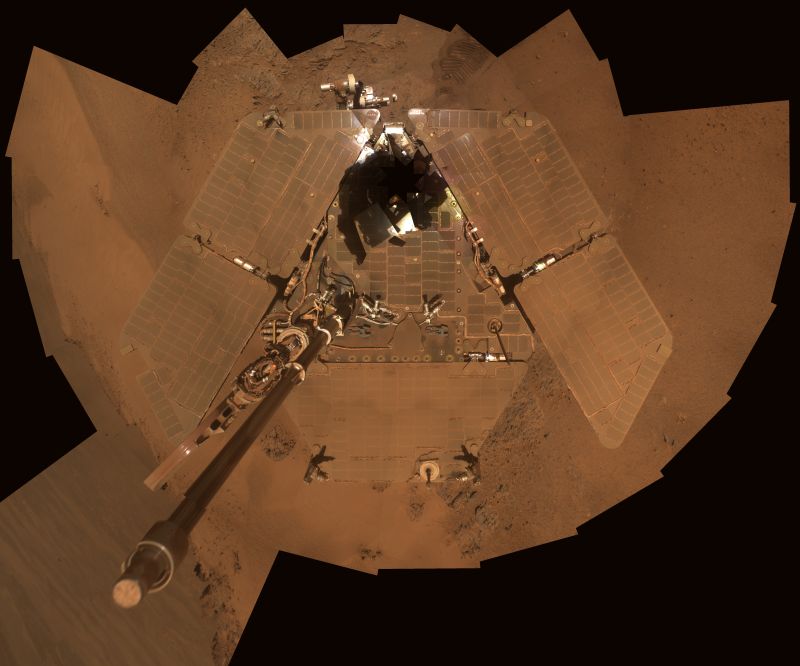Ten years ago, the Mars Exploration Rovers Spirit and Opportunity landed on Mars. What an adventure it’s been. Though Spirit and Opportunity were built as nearly identical twins, and both succeeded in the main goal of finding evidence for ancient watery environments on Mars, their stories diverged early.
Spirit was sent to a crater where the basin’s shape and apparent inflow channels seen from orbit suggested a lake once existed. Opportunity’s landing area, almost exactly halfway around the planet, was selected mainly on the basis of a water-clue mineral detected from orbit, rather than landform shapes. Spirit’s destination did not pan out initially. The crater may have held a lake, but if there are any lakebed sediments, they are thoroughly buried under later volcanic deposits. Opportunity, the luckier twin, landed a stone’s throw from an exposure of layered rock that within weeks yielded compositional and textural evidence of a water-rich ancient environment.
Within the initial three-month missions and without expectation of surviving a full year, each rover set out cross-country toward other destinations: hills on the horizon for Spirit and craters exposing deeper layers for Opportunity. Spirit drove a total of 4.8 miles (7.7 kilometers), some of that with one of its six wheels not rotating. Loss of use of a second wheel while the rover was in a sand trap contributed to the 2010 end of that mission. Opportunity has driven 24 miles (38.7 kilometers) and is still going strong.
One key to Spirit and Opportunity working for years, instead of a few months, has been winds that occasionally remove some of the dust accumulating on solar panels that generate the rovers’ electricity. Also, the ground crew became adept at managing each rover’s power consumption and taking advantage of slopes for favorably tilting the rovers toward the sun during Martian winters.

This self portrait from NASA’s Mars Exploration Rover Opportunity shows dust accumulation on the rover’s solar panels as the mission approached its fifth Martian winter. The dust reduces the rover’s power supply, and the rover’s mobility is limited until the winter is over or wind cleans the panels. Image Credit: NASA/JPL-Caltech/Cornell/Arizona State University.